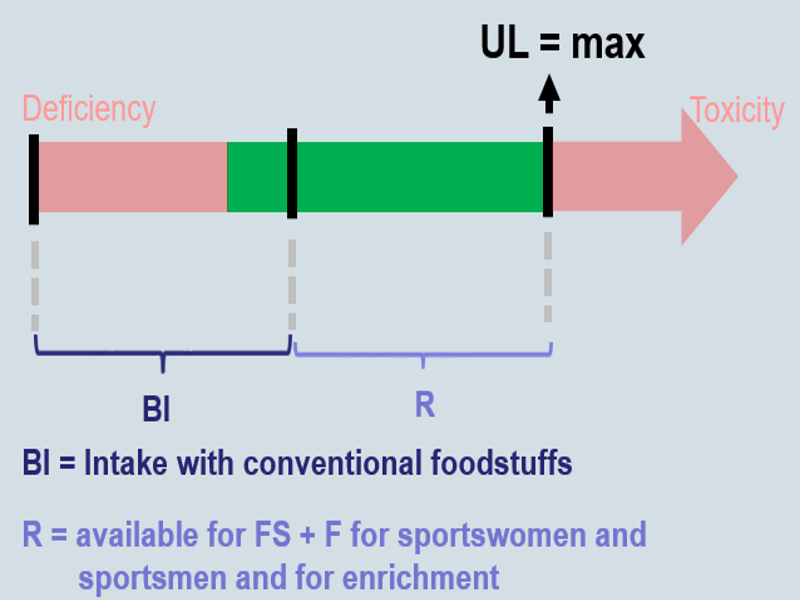The previous maximum levels for vitamins and minerals in foods were based on the daily requirement for a nutrient. The new maximum level model is focused on protecting health and is based on current scientific knowledge.
The main reference for the new model is a Federal Institute for Risk Assessment (BfR) publication entitled “Maximum levels for vitamins and minerals in food supplements” (2018) . The model uses tolerable upper intake levels (ULs) for individual nutrients and takes into account the different intakes of each nutrient: via the normal daily diet (basic intake), via fortified (“enriched”) foods and food supplements, or via foods for athletes.
For these different food categories, nutrients are divided into four groups, ranging from non-critical substances, to critical substances with maximum levels, to substances for which maximum levels and warning labels are required.
The maximum level model in detail
The model recognises that the tolerable upper intake level (UL) for each nutrient should not be exceeded. To this end, an overall assessment was also made of the intake of a nutrient via the normal daily diet (basic intake, BI), fortified foods and food supplements, or foods for athletes.

The difference between the tolerable upper intake level (UL) and the basic intake (BI) is the amount per nutrient that is available for fortified foods and food supplements, or foods for athletes. The key used to distribute this “residual amount” (UL-BI) between these two product categories is explained below.
Distribution of the residual amount (UL-BI)
The substances were divided into four groups:
- Group 1: non-critical substances, for which no maximum level will be set;
- Group 2: substances with a large gap between UL and BI (i.e. with a large residual amount or a low risk of exceeding the UL);
- Group 3: substances with a small gap between UL and BI (i.e. with a small residual amount or a high risk of exceeding the UL).
For groups 2 and 3, the available residual amount of each nutrient is distributed between fortified foods and food supplements or foods for athletes in a ratio of 1:3. This distribution ensures that fortified foods in the daily ration contain a significant amount of a nutrient and that food supplements represent a concentrated form of a nutrient.

- Group 4: substances for which adverse effects or interactions may occur at medium-low dosages or above, and which therefore require a warning label. Vitamin K and magnesium fall into this group. In the case of fortified foods, the maximum levels will be set below the threshold for warning labels. In the case of food supplements and foods for athletes, the previous levels will be retained, provided that – above a specified dosage – the relevant warnings are displayed.
More information
Last modification 13.12.2021




